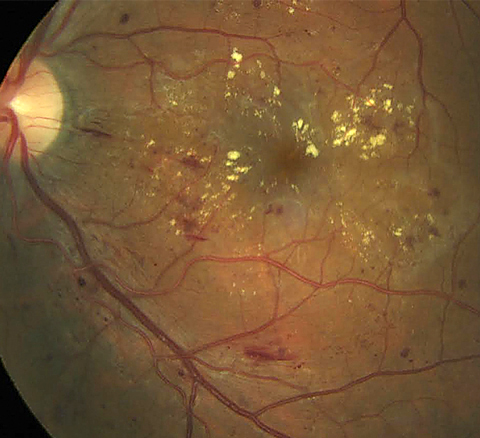 |
|
Fellow-eye involvement typically occurred within 15 months of unilateral DME diagnosis in this study. Click image to enlarge. |
Diabetic macular edema (DME) develops when upregulated VEGF increases retinal capillary permeability, leading to edema in patients with diabetic retinopathy. The condition presents unilaterally and bilaterally, with about half of unilateral cases progressing to bilaterality. Recently, researchers examined factors associated with DME onset in the fellow eye and reported that certain diabetic factors contribute to conversion.
In the study, the data of 140 adult patients with treatment-naïve unilateral DME were analyzed. A total of 50 patients converted to bilateral DME, and 90 patients did not. The researchers reported that the average time to fellow-eye involvement was 15 months, with 64% of patients converting within one year and 90% converting within three years.
They found that HbA1c, diabetic retinopathy duration and diabetic foot disease were significant risk factors for conversion. Other factors linked to conversion were better visual acuity at the time of initial diagnosis and a history of panretinal photocoagulation or focal laser in the primary eye.
The researchers wrote in their paper that the results “highlighted the importance of good glycemic control as well as the association between diabetic factors” in developing fellow-eye disease. They concluded that “these findings can help guide patient education and [DME] screening management in routine clinical practice to enhance patient-physician decision-making while preventing subsequent losses in vision-related quality of life related to development of bilateral [DME].”
Alsaloum P, Russell MW, Blaga V, et al. Time to fellow eye involvement in patients with unilateral diabetic macular oedema. Eye (Lond). February 3, 2023. [Epub ahead of print]. |

